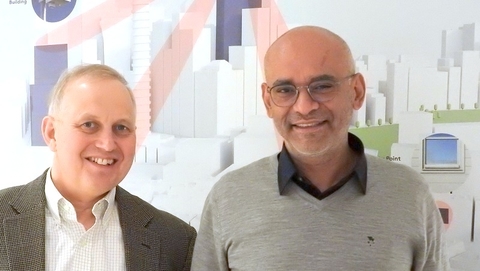LAS VEGAS—Boston-based Starry is getting ready to launch its fixed wireless service in up to 16 new markets this year, which means hiring a lot more people. In fact, it’s on target to end the year with about double the number of people it currently employs.
“Being a small company in this game, scaling up the organization is the No. 1 challenge, finding and training the right people,” Starry CEO Chet Kanojia said on the sidelines of CES 2018.

At the rate it’s going, Starry needs to hire dozens of people in the markets it plans to enter; it just finished hiring 12 people in Boston. And these are not the kind of jobs where they can hire just anybody and trust them to get up to speed. The technology depends on millimeter wave bands at 37-38.6 GHz.
Plans call for beta launches in Los Angeles and Washington, D.C., this month, followed by expansion into 14 additional markets over the next year including New York, Cleveland, Chicago, Houston, Dallas, Denver, Seattle, Detroit, Atlanta, Indianapolis, San Francisco, Philadelphia, Miami and Minneapolis.
RELATED: Starry opts for Wi-Fi tech rather than 5G to keep costs low
Starry is the first company to commercially deploy prestandard 5G, point-to-multipoint fixed wireless technology to deliver gigabit-capable broadband to the home. The company currently offers consumers a no-contract, no-data cap plan of $50 per month for 200 mbps download/upload, inclusive of installation, 24/7 customer care and all equipment including Starry’s touchscreen Wi-Fi hub, Starry Station.
The company has invested a lot of time into getting its products working in the form factor they’re in, including a window unit designed to sit both inside and outside of a window. Inside the window unit is an 802.11ax modem and an active electronically scanned array (AESA) antenna; the whole thing is coated with the kind of material that will withstand snow, ice and snowmelt; it’s been in development a few years. “We do all of our equipment design in house,” Kanojia noted.
Financed by venture capital, Starry is in the infrastructure business— but not like the traditional wireless infrastructure business. And it’s unlike Kanojia’s prior company, Aereo, which famously sought to disrupt the broadcast market, except in the spirit and sense that both are taking on established businesses with innovative technology.
Starry executives are somewhat amused by characterizations that Starry is a defiant upstart of sorts.
“People confuse us for some kind of rebellious bunch. We are not,” Kanojia said. “This is about broadband as a massively profitable business. If you can solve for two or three complex issues” and establish a relationship with the consumer, then there's an opportunity for having a successful business amid established monopolies. “Us trying to claw our way in, we sound like rebels, but no, we just want to be in a good business. It’s very simple,” he added.
Joe Lipowski, chief technology officer for Starry, suggested the one commonality between Starry and Aereo might be in how the world has changed so much in the last 15 or so years. Amazon Web Services enables myriad new businesses today whereas 15 years ago, that wasn’t available. Now, with the cloud and payment technologies, it's relatively easy to set up a new business. And unlike big incumbent service providers, Starry doesn’t have to worry about bringing legacy equipment into the fold, nor does it have to do a nationwide build right away.
RELATED: Starry’s initiative with Marvell aims to drive 5G ecosystem for fixed access
Starry recently announced it will collaborate with Marvell to make a new set of fixed wireless access technologies available to other companies, all in an effort to speed the deployment of fixed wireless 5G technologies. The collaboration brings elements of Starry’s millimeter wave, prestandard 5G fixed wireless technology—namely its integrated-circuit, smart antenna technology—together with Marvell’s expertise in 802.11ax technology.
Starry said that making the technology available more broadly in domestic and international markets will help fixed wireless providers of all sizes dramatically improve scalability and deployment of their network, making ubiquitous broadband access closer to reality. “We’re trying to enable an ecosystem,” Lipowski said.

